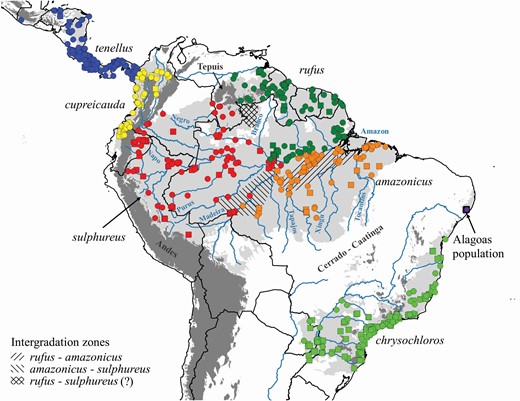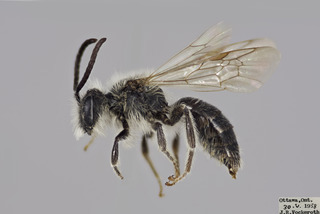rupicola
Amigo de los Psittacidos

Hi, I've been searching for Trogon gigas for quite some time now and this is what I found out:
The whereabout's of the specimens from Gevers (Rotterdam) and Carbintus (the Hague) are unknown and most likely to be considered as lost.
Temminck was the founder of one of todays largest collections in the world; Naturalis Biodiversity Center, Leiden, the Netherlands, to which he added his personal collection in 1820. Unfortunately his specimen of Trogon gigas (used by Jacques Barraband to draw the plate in Vaillant's 'Histoire Naturelle des Promerops et des Guepiers' in 1807) is no longer in the Naturalis collection.
Note that John Gould used Barraband's artwork to create his version of Trogon gigas, and never saw an example himself.
Also note that Gould actually placed a questionmark behind Trogon gigas in “A Monograph of the Trogonidae, or Family of Trogons, London (1835–1838)”.
In 'the Catalogue of the Birds in the British Museum' p.477 Le Couroucou Géant, LeVaill. Hist.Courouc. Et Tourac.Pt III. Pl.12 (1806) is indicated as 'doubtful species'.
I have not found gigas in any extinct bird species listing, but who knows, perhaps it slipped through if it actually existed.
As long as no specimen shows up somewhere in the world It will be very hard -if not impossible- to answer our questions about the Giant Trogon.
Regards
As far as I know the specimens described by LeVaillant (quote above) are the only known specimens of Trogon gigas.“ This handsome Indian species is not only new, but the largest of its genus. It is 18 inches long from
the top of the head to the extremity of the tail. Its body is twice the size of the largest American species.
“ I have only seen three specimens of this fine species ; one in the collection of M. Carbintus at the Hague,
a second at Rotterdam in the possession of M. Gevers, and another in the large and splendid collection of
my friend M. Temminck at Amsterdam. This individual, from which our figure was taken, was sent along
with many other birds from Java. I have seen a fourth specimen in the Paris Museum ; but as it was in an
imperfect state, it has not as yet been placed in the gallery.”
The whereabout's of the specimens from Gevers (Rotterdam) and Carbintus (the Hague) are unknown and most likely to be considered as lost.
Temminck was the founder of one of todays largest collections in the world; Naturalis Biodiversity Center, Leiden, the Netherlands, to which he added his personal collection in 1820. Unfortunately his specimen of Trogon gigas (used by Jacques Barraband to draw the plate in Vaillant's 'Histoire Naturelle des Promerops et des Guepiers' in 1807) is no longer in the Naturalis collection.
Note that John Gould used Barraband's artwork to create his version of Trogon gigas, and never saw an example himself.
Also note that Gould actually placed a questionmark behind Trogon gigas in “A Monograph of the Trogonidae, or Family of Trogons, London (1835–1838)”.
In 'the Catalogue of the Birds in the British Museum' p.477 Le Couroucou Géant, LeVaill. Hist.Courouc. Et Tourac.Pt III. Pl.12 (1806) is indicated as 'doubtful species'.
I have not found gigas in any extinct bird species listing, but who knows, perhaps it slipped through if it actually existed.
As long as no specimen shows up somewhere in the world It will be very hard -if not impossible- to answer our questions about the Giant Trogon.
Regards
Last edited:












